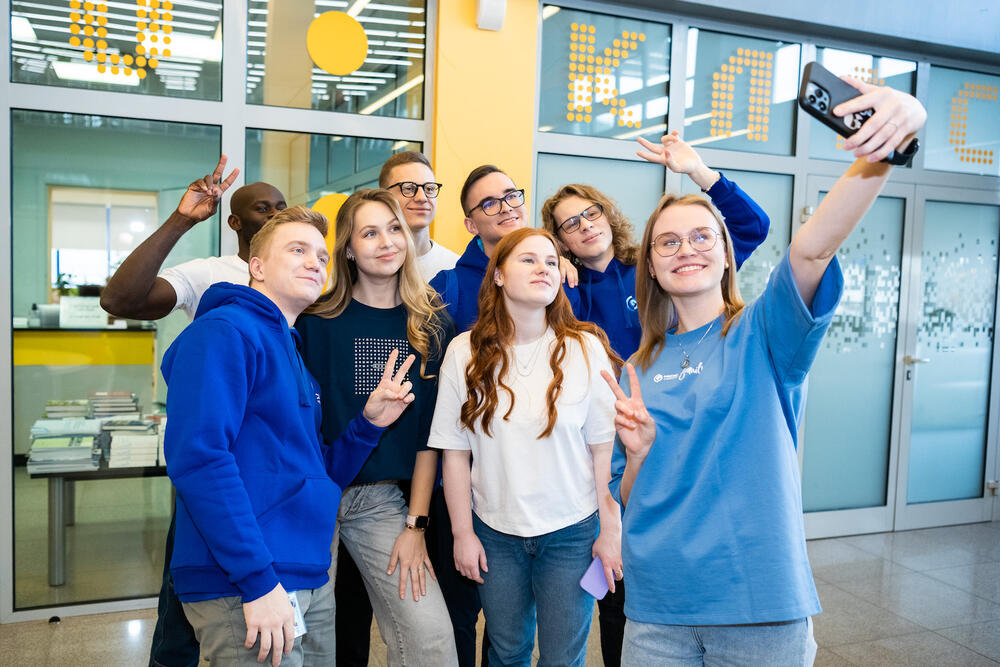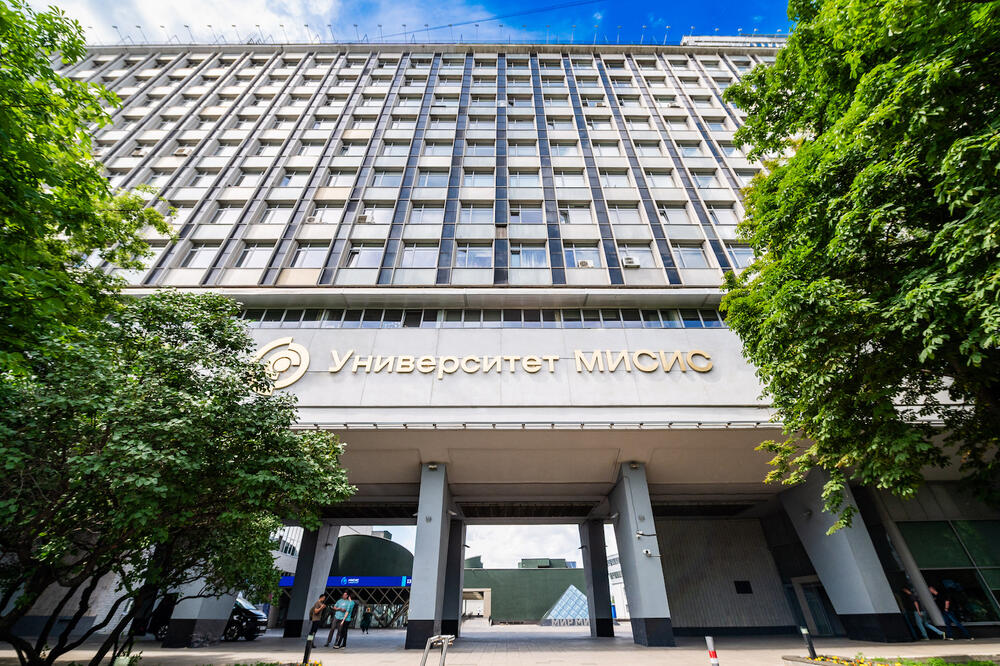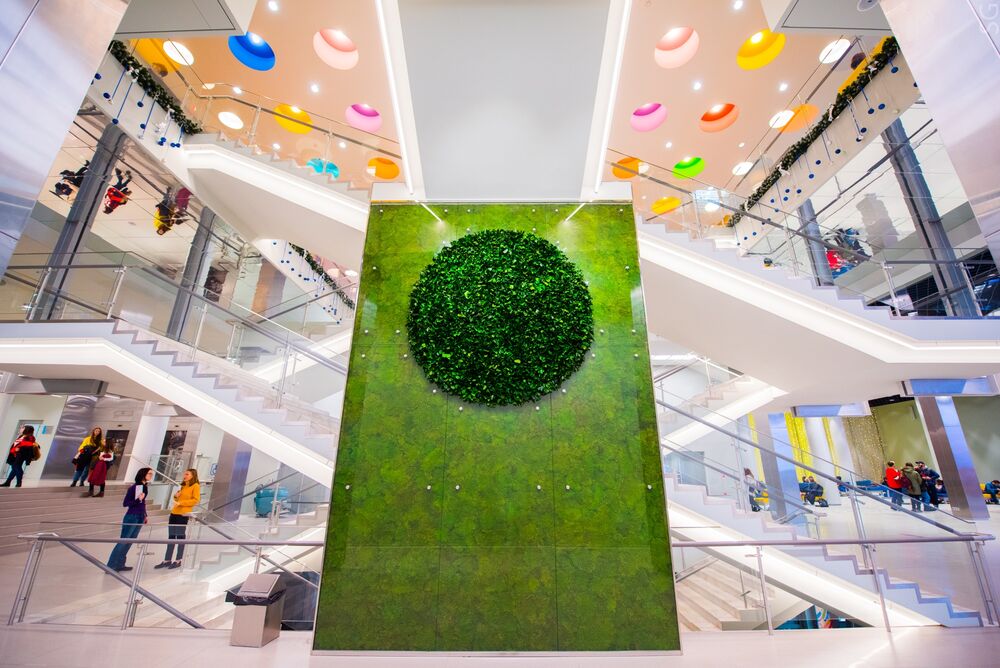The history of the National University of Science and Technology MISIS dates back to over a century ago, when in 1918 the Moscow Mining Academy was founded, with the metallurgy department being a part of it. The University was gradually expanding, and already by 1921 the departments were transformed into universities; in 1930 it was divided into six independent institutions.
As of today, three of them — Steel Institute, Base Metal Institute and Mining Institute — merged into one educational establishment, the National University of Science and Technology NUST MISIS.
Many of the University’s graduates are the legends of the Soviet manufacturing industry, the so-called “steel People’s Commissars”. Thus, the USSR steel industry was long headed by Ivan Tevosyan, and the base metal industry was headed by Petr Lomako, who was entered into the Guinness World Records for the longest years on ministerial positions. The Nuclear Project of the Soviet Union was being taken to success by Avraami Zavenyagin, MISIS First Rector, Efim Slavsky and Vasili Emelyanov. Mikhail Pavlov, Academician and Head of the Base Metal Department of MISIS, participated in 1920-1930s in the designing of all of the country’s large metallurgical plants, blast furnaces and steel-making vessels.
During the WWII, MISIS was pursuing a tough strategic goal — preparing high-quality professionals, whom the country lacked badly. Despite all challenges, including the need to basically recruit the entire academic staff from scratch, the university did cope with the task, and started to prepare metallurgical specialists. It was its commitment that took MISIS to its first award on 23 February 1944, the Order of the Red Banner of Labour.
After the end of the war, the approach to training specialists changed drastically. While MISIS would first focus on preparing specialists for plants, it rather shifted towards science in the post-war period.
In 1948, the University opened its Physics and Chemistry Department, which was preparing the well-known ‘secret physicists’ for research organizations, nuclear and military industries. In 1962, the Semiconductor Materials and Devices Department was opened, after which the university changed its name into Moscow Steel and Alloy Institute.
In 1960-1980s, the country got extremely interested in exact and natural sciences. By that time, MISIS had its scientific school finalized, which is still one of the best schools in the country, and is competitive both nation-wide and around the globe.
NUST MISIS scientists have been acknowledged around the world, and pose decent competition to the professors and lecturers of the world’s largest scientific centres. Thus, the Theoretical Physics Department was headed in
In 2000 the Moscow State Institute of Steel And Alloys become the laureate of the Russian Government Prize for the quality of education.
On 7 October 2008, MISIS became the first Russian university to be granted with the status of the National Research Technological University by the order of Dmitry Medvedev, the President of the Russian Federation.
2014
The merger was completed of NUST MISIS and Moscow Mining University. As of today, the National Research Technological University MISIS comprises three Russian and one foreign branches, and eight institutions around Moscow.
For the first time ever, NUST MISIS appeared on the QS World University Ranking. In the QS: BRICS the University got to the TOP-100 list of the best universities.
The International Scientific Advisory Council started to operate at NUST MISIS, which comprises representatives of the world’s scientific elite from the best universities: Cambridge, Stanford, Technion, and other scientific centres.
2015
NUST MISIS has entered THE World University Rankings (group
The only one of the Russian universities, NUST MISIS became the member of the new Times Higher Education: World’s Best Small Universities Ranking, having taken the 19th position.
The young scientists from NUST MISIS were nominated to the Russian Government Award in the area of science and technology for young scientists for the development of technologies for producing fibrous magnetic materials for innovative fabrics to comprehensively protect human beings against external impacts.
2016
NUST MISIS was the best performing university amongst Russian educational establishments on the international and regional QS ratings: in climbed 100 notches up in the QS World University Ranking, from 89th to 87th position in the QS Ranking: BRICS, and from 75th to 63d in the ranking of developing countries of Europe and Central Asia.
In the QS Graduate Employability Rankings NUST MISIS become one of the top-7 global universities that scored the maximum of 100 points against the criterion “Organisation of Interaction Between Employers and Students”.
NUST MISIS and the Russian Quantum Centre established a scientific collaboration NUST MISIS Quantum Centre which included about 10 research labs and centres. Given its joined potential, NUST MISIS Quantum Centre challenges the world’s best research centres specialising in this area.
The University participated in the Search for Hidden Particles experiment at the European Organization for Nuclear Research (CERN, Geneva).
The World’s Most Influential Scientific Minds 2016 by Thomson Reuters included two NUST MISIS researchers, Professor Sergey Morozov, Chief of the Laboratory for Functional Low-Dimension Structures, and Professor Dmitry Golberg, Chief of the Laboratory for Inorganic Nanomaterials.
The young scientists of NUST MISIS received the Russian Government Award in the area of science and technologies for developing a unique laser complex for controlled thermonuclear fusion, and the Moscow Government Awards for the development of import-substitution technologies for producing moulded pieces of titanium alloys for the Russian aircraft industry.
2017
NUST MISIS entered into an agreement with the European Organisation for Nuclear Research (CERN) on the format of work within the SHiP experiment. The University signed two memorandums on cultural and research cooperation with other participants of the SHiP experiment: the Italian National Institute for Nuclear Physics (INFN), and the University of Naples Federico II (UNINA).
The University opened the High-End Prototyping Centre Kinetica, which is Russia’s unique high-tech digital lab enabling the full cycle of innovative development.
NUST MISIS and UC Rusal established the Institute of Lightweight Materials & Technologies, which is Russia’s first R&D platform for developing state-of-the-art technologies.
Vnesheconombank and NUST MISIS established the Centre of Competencies for New Materials and Breakthrough Technologies which primarily focuses on blockchain, convergent and quantum technologies. This is the world’s first centre for these competencies, with its key consumers being Russian state companies and authorities.
The young scientists of NUST MISIS were awarded for the development of betavoltaic converters for self-contained power supply necessary for exploring the space and the Arctic Regions.
2018
NUST MISIS is celebrating a centennial since the founding of its predecessor, the Moscow Mining Academy. Throughout the year, the University will be holding large-scale anniversary projects and events.
Two scientific groups from NUST MISIS won the Moscow Government Award for their works on “Development and Research of Radiation-Stimulating Elements with Increased Service Life” and “Development of a New Generation Diamond-Cutting Tool with Nanomodified Ligaments and Hybrid-Working Layers.”
2019
NUST MISIS became the best university in Russia in the field of materials science, entering the 101+ category of the QS World University Rankings by Subject in Materials science.
NUST MISIS became the winner of the contest for the development of a roadmap for quantum technologies for the Digital Economy program.
The NUST MISIS team received a letter of gratitude from the President of the Russian Federation for achievements in science and education of highly qualified specialists.
NUST MISIS and National Technological Initiative Platform (NTI Platform) opened the “Boiling Point — Commune” — the largest and most high-tech “Boiling Point” in Russia.
Within the framework of the signed cooperation agreement, the Mail.ru Group Big Data Academy was opened at NUST MISIS.
2020
NUST MISIS and Sberbank concluded a cooperation agreement approving the road map until 2024. It consists of 10 projects and involves joint studying of bachelors and masters, the establishment of a service robotics laboratory at the university and conducting joint scientific research.
Five NUST MISIS researchers were among the laureates of the annual Moscow Government Award for Young Scientists. The university scientists have been the winners of the competition every year since 2016.
The Ministry of Science and Higher Education of the Russian Federation recognized the postgraduate student of NUST MISIS Elizaveta Permyakova as the best of more than 185 thousand graduates of Moscow universities in 2020.
The
2021
NUST MISIS became the winner of the Russian Government Mega-grant Competition, which sponsored the creation of the Functional Quantum Materials laboratory. In total, NUST MISIS has 6 laboratories created with the funds of mega-grants.
NUST MISIS entered the top 100 world’s best universities in the QS subject ranking “Engineering — Oil and Gas Business”.
The university entered the top 5 best universities of Russia according to Forbes.
The university became the winner of the Priority 2030 Program — both in its basic part and in the direction of Research Leadership, where it entered the first group.
Scientists of the Quantum Communications Centre of NTI of NUST MISIS, together with colleagues from MTUCI, KuRate and Security Code companies, launched the first open access quantum network in Russia. The project became the winner of the Technological Breakthrough-2021 Award in the category “Breakthrough in the Development of New Materials and Technologies”.
The university became the winner of the all-Russian competition for the best organization of the activities of student self-government bodies.
NUST MISIS became an active participant of the Year of Science and Technology and the co-organizer of the all-Russian campaign “Na Ostrie Nauki” (On the Edge of Science). The University was awarded by Dmitry Chernyshenko, Deputy Prime Minister of the Russian Federation, Andrei Fursenko, Assistant to the President of the Russian Federation, and Valery Falkov, Minister of Science and Higher Education, for the contribution to the Year of Science and Technology and the popularization of Russian scientific achievements.
2022
MISIS University took first place in the subject rating “Materials Technologies” published by RAEX rating agency.
MISIS University jointly with Rosatom State Corporation became the winner of the federal project on creation of Advanced Engineering Schools.
The University of Science and Technology MISIS got placed in the
As part of the “Priority — 2030” project implementation, there has been created a consortium “Health Engineering” at NUST MISIS, which includes leading universities, research centers, innovative enterprises and startups.
With the support of the Russian Ministry of Education and Science and the Association of Volunteer Centers, the “#WeAreTogether” Humanitarian Aid Center was opened at NUST MISIS.
Twenty-one research projects of young scientists from MISIS University received grant support from the Russian Science Foundation.
The University of Science and Technology MISIS got rebranded. The changes in the university’s positioning, brand outlook, and brand identity reflect the dynamic development of the university.
Rector of the University of Science and Technology MISIS Alevtina Anatolyevna Chernikova was awarded the Order of “Dustlik” (“Friendship”) of the Republic of Uzbekistan for her great contribution to the development of multifaceted and mutually beneficial relations between the Republic of Uzbekistan and the Russian Federation.
2023
MISIS University presented Russia's first "tissue gun", which can stop bleeding and start regenerative processes in case of light and moderate wounds in military field conditions and in emergency zones.
NUST MISIS and the China SCO Technology Transfer Center member states signed an agreement in the field of implementation and commercialization of innovative projects.
MISIS University, Metalloinvest company, the Agency of Strategic Initiatives and the Government of Belgorod Region signed an agreement on the development of industrial tourism, within the framework of which a competence center for industrial tourism in mining and metallurgy will be opened.
MISIS University has strengthened its position in the ranking of the best universities in the world according to Round University Rankings (RUR), taking 264th place in the world and entering the top 5 universities in Russia. Since 2018, the university's position has increased 249 points and is up 10 points from last year.
MISIS University signed a Memorandum of Cooperation with the Moscow City Government on the training of engineering and technical specialists for the city's industrial enterprises.
The University of Science and Technology MISIS became a participant of the pilot project in accordance with the Decree of the President of the Russian Federation dated 12.05.2023 № 343 "On some issues of improving the system of higher education".
NUST MISIS launched the first satellite of its own design. The orbiter is to demonstrate the feasibility of using small spacecraft to observe the Sun in the soft X-ray band and test a laser communication link. This was the first smallsat with such functionality launched in Russia.
2024
NUST MISIS entered the top-3 universities of Russia according to the new scientometric ranking CWTS Leiden Ranking Open Edition, which is based on the open catalog of scientific papers OpenAlex instead of Web of Science.
The MISIS University students and postgraduates team won the competition of the IV Moscow international festival of student entrepreneurship "Moscow is a Start Point". Approximately 10,000 people attended the festival.
Researchers from NUST MISIS became laureates of the Moscow Government Prize for young scientists in the nominations "Chemistry and Materials Science" and "Technical and Engineering Sciences".
The "New Level" project, aimed at developing students' leadership qualities, won the monitoring competition of the best practices in youth policy and educational activities, held by the Ministry of science and higher education of Russia.
Thanks to the joint efforts of scientists from NUST MISIS and employees of the company "3D Bioprinting Solutions," it was possible to print equivalents of hollow human organs on a bioprinter aboard the International Space Station.
MISIS University and five other Russian universities signed a cooperation agreement with the Rostec State Corporation as part of a strategic initiative to integrate educational and research institutions with the real sector of the economy.
At the MISIS University branch in Almalyk (Republic of Uzbekistan), an Advanced Engineering School has been created with a new program in "Electrical Power Engineering and Electrical Engineering".
The Centre of Russian Language and Culture opened at the branch of NUST MISIS in Dushanbe (Republic of Tajikistan).
NUST MISIS and Morneftegazstroy Co Ltd signed an agreement to establish a Center for Advanced Technologies in the Production of Special Steel.
2025
The results of the 14th monitoring of the quality of student admissions to Russian universities in 2024 have been presented. NUST MISIS moved up to 11th place out of 803 Russian universities. In terms of paid admissions quality, MISIS ranks 9th, showing an increase in the average score for paid admissions to 78.4 (+3.5 points).
In the Times Higher Education subject rankings, MISIS University was ranked among the leading universities in computer science for the first time in 2025. It also entered the top 400 universities in the world in physics and the top 600 in engineering. In March, the university improved its results in the QS-2025 subject rankings, entering 5 subject and 2 industry lists. NUST MISIS maintained its first place in Russia in the field of materials science and entered the top 3 in mining engineering.
A researcher from NUST MISIS, candidate of technical sciences Artem Potanin was included in the list of winners of the annual Moscow Government awards for young scientists. He won the award in the "Technical and Engineering Sciences" category.
Sixteen students from MISIS University became winners of the Vladimir Potanin Foundation competition. Last year, there were 5 winners from university. Starting in February 2025, they will receive a monthly named scholarship from the Russian businessman, president and largest shareholder at Nornickel Vladimir Potanin in the amount of 25,000 rubles until they graduate.
MISIS University was included in the first group of 11 leading universities, each of which will receive the maximum grant of up to 1 billion rubles due to their participation in the strategic educational "Priority-2030" initiative.



